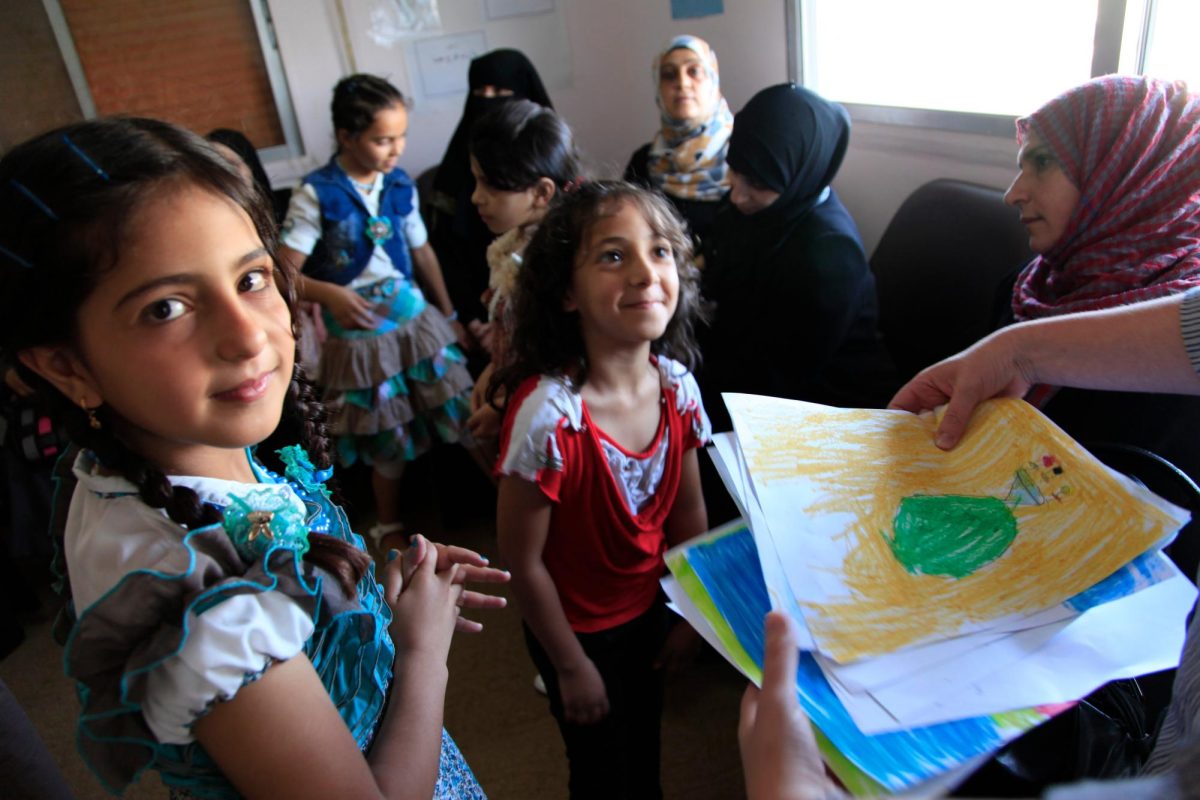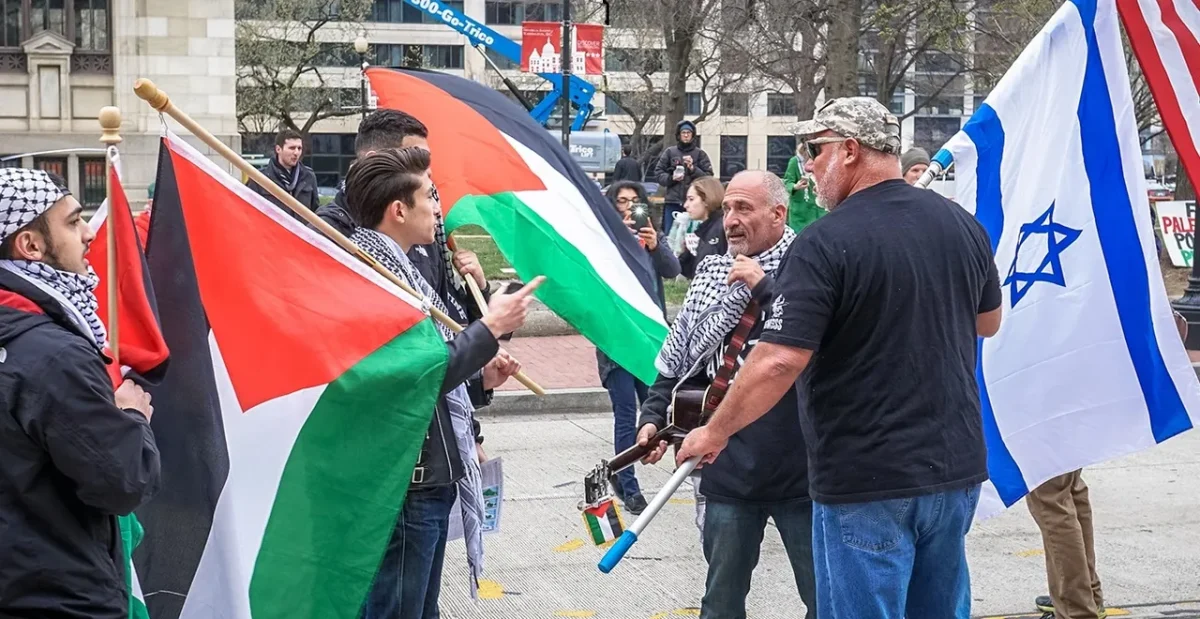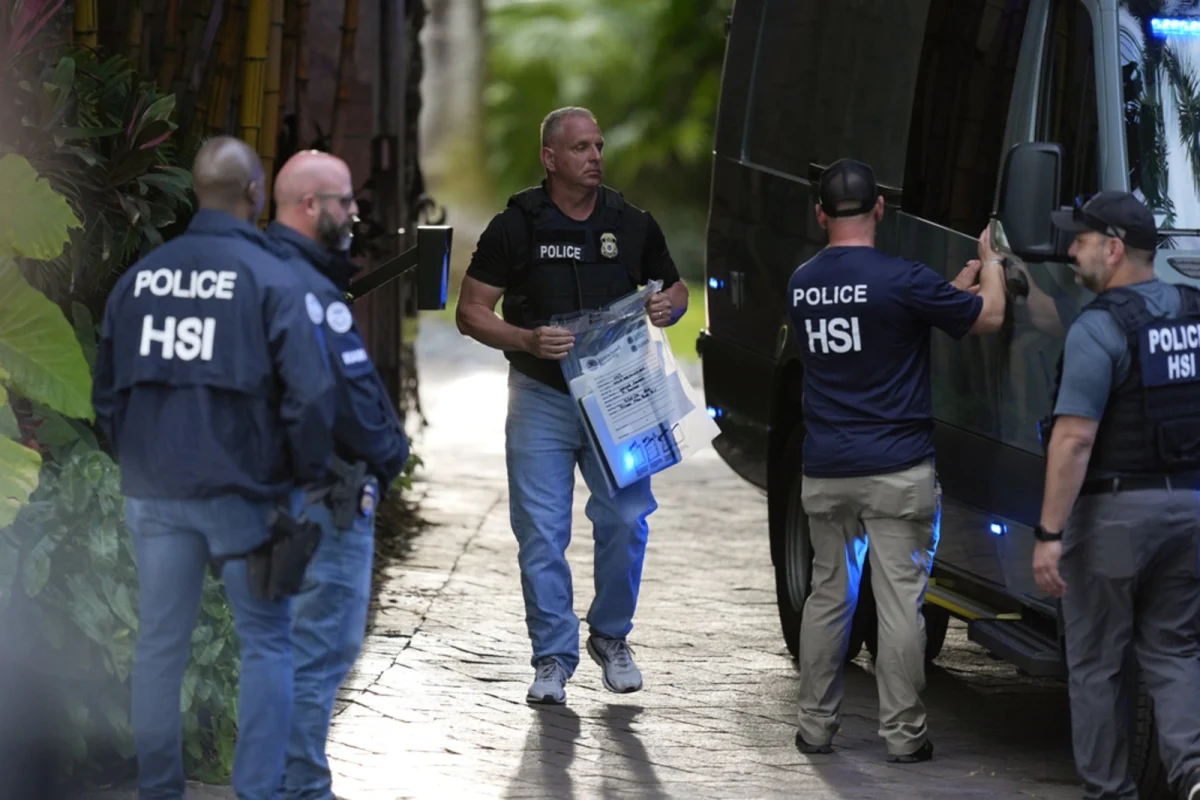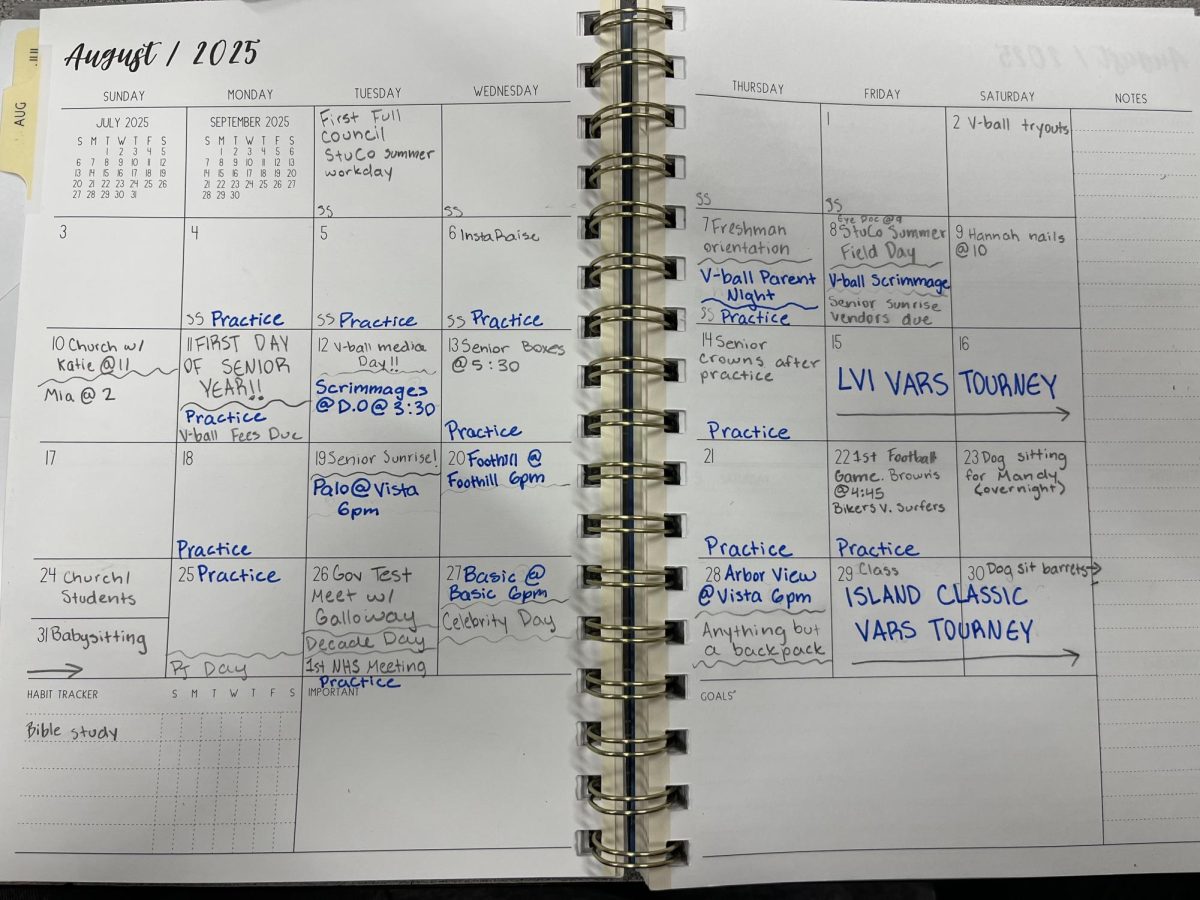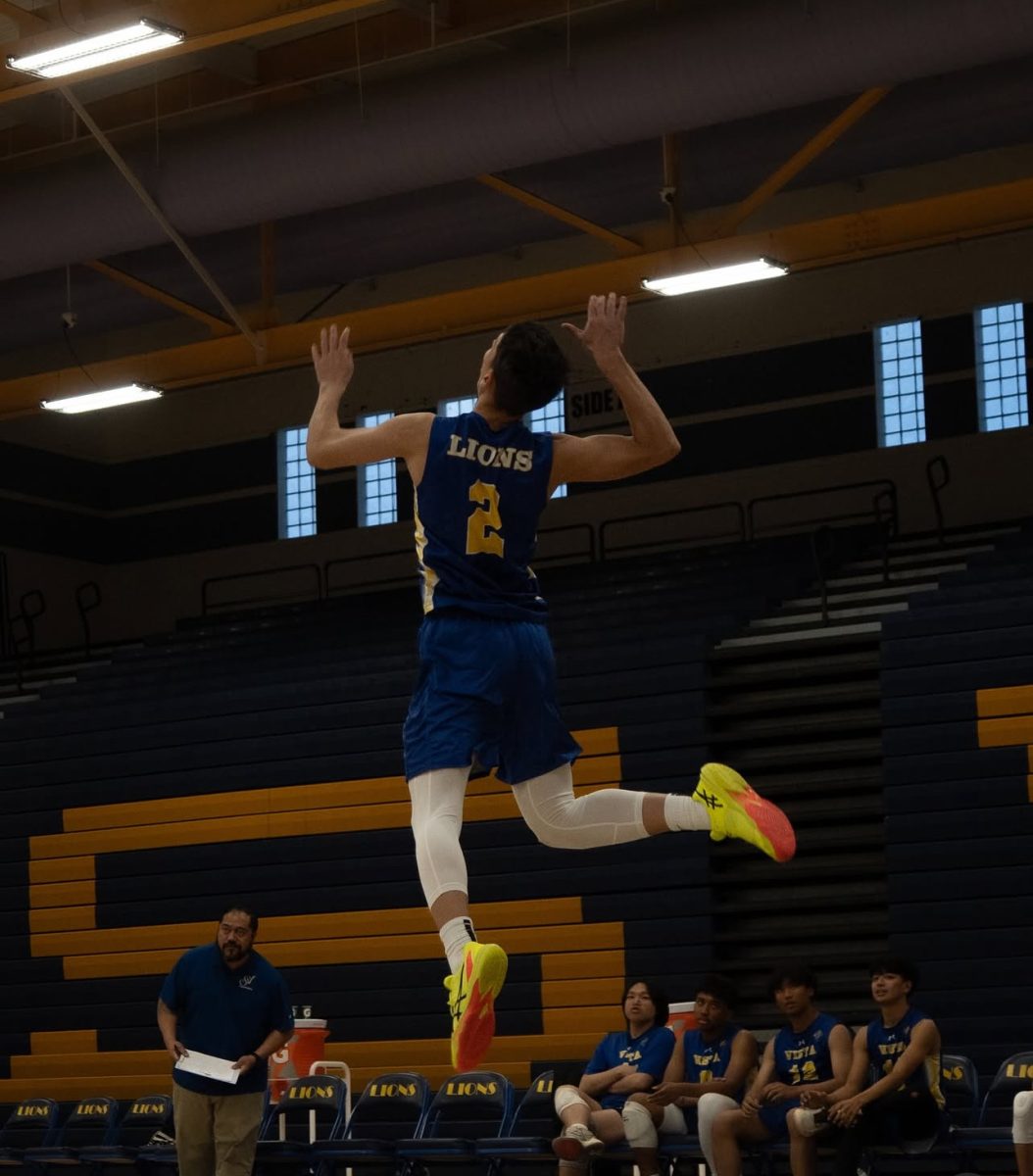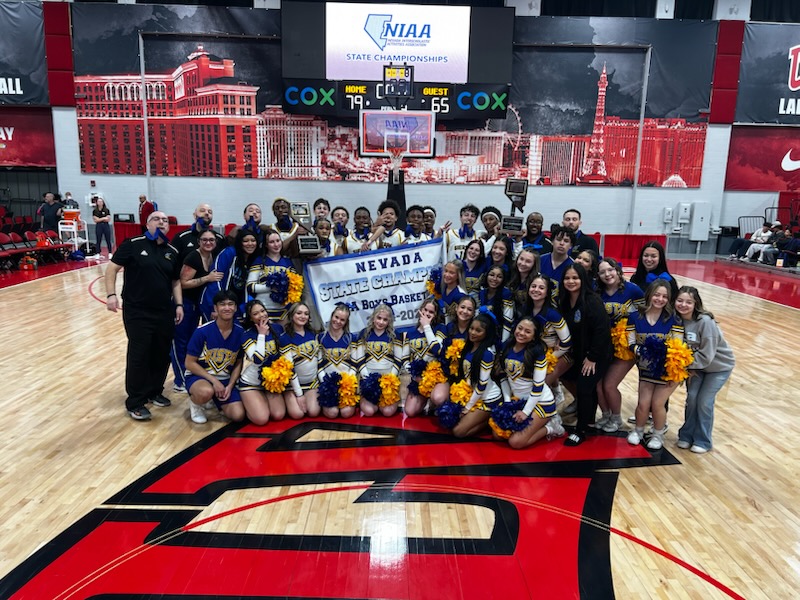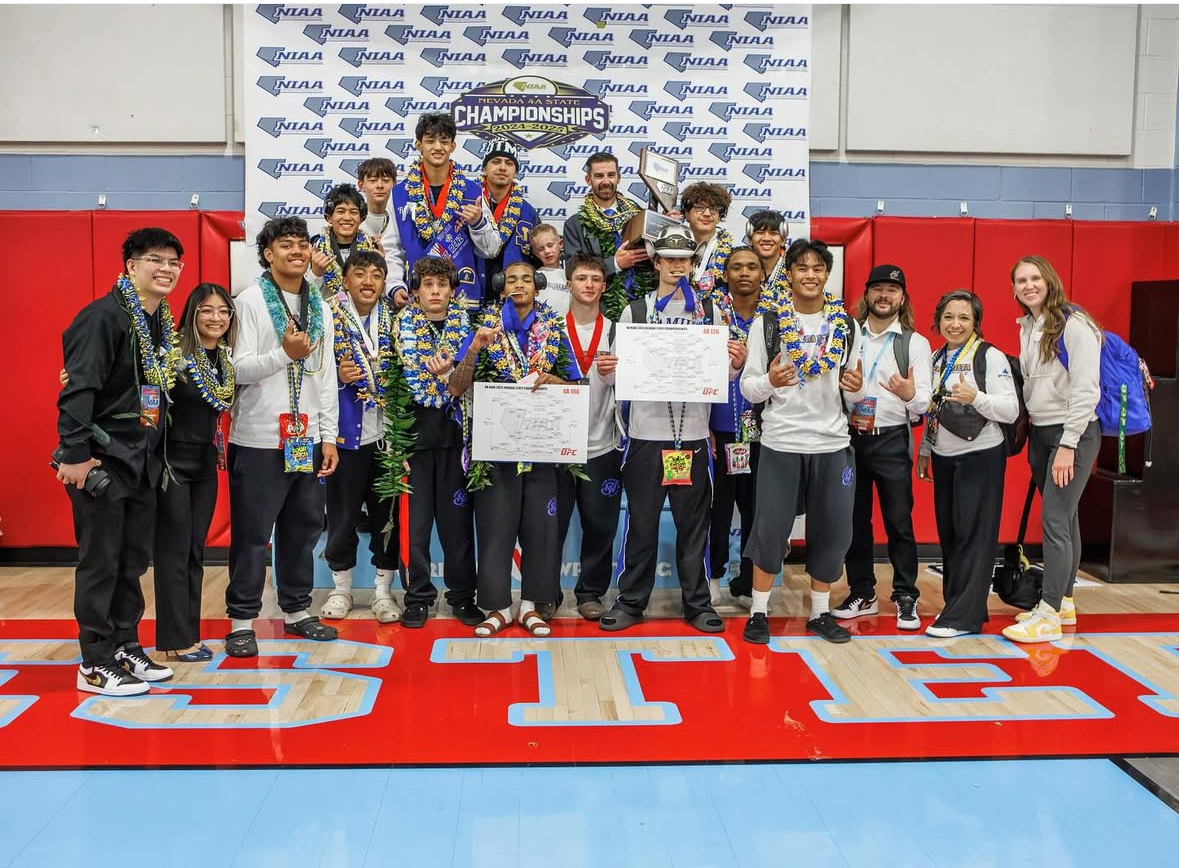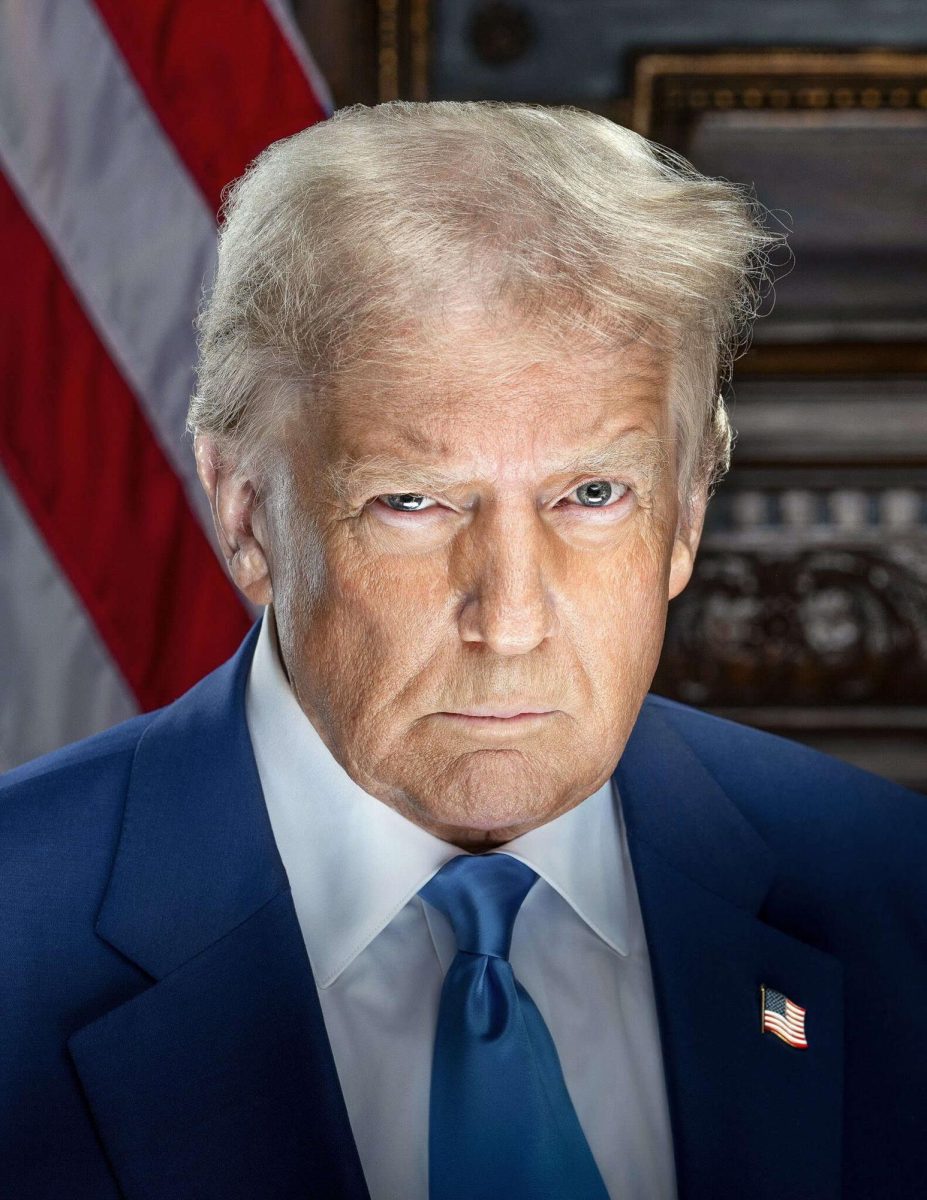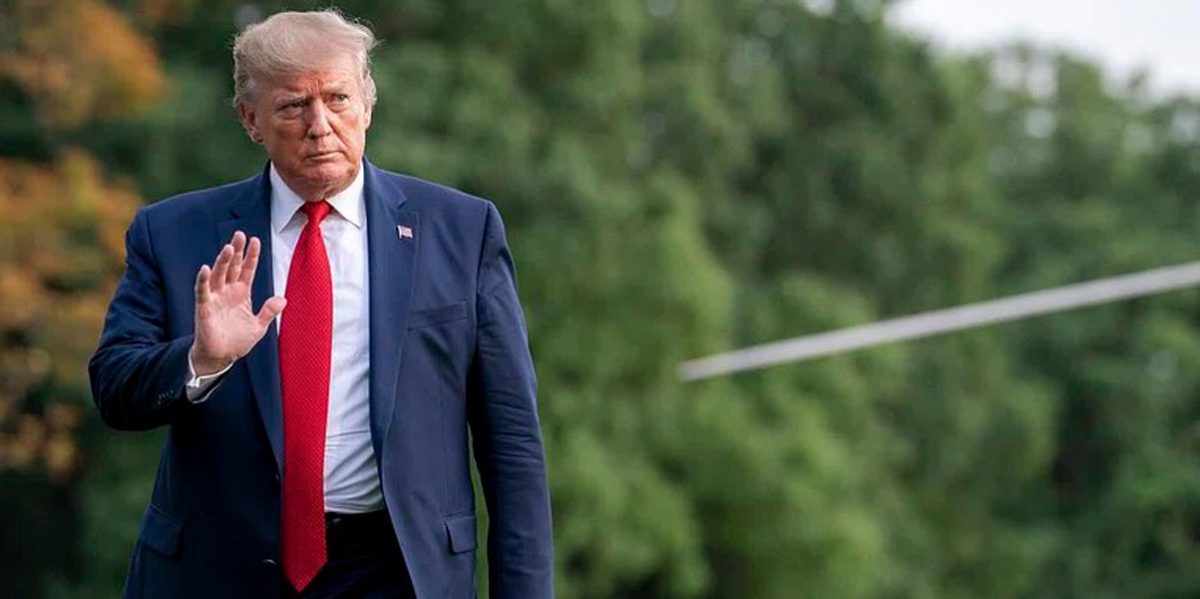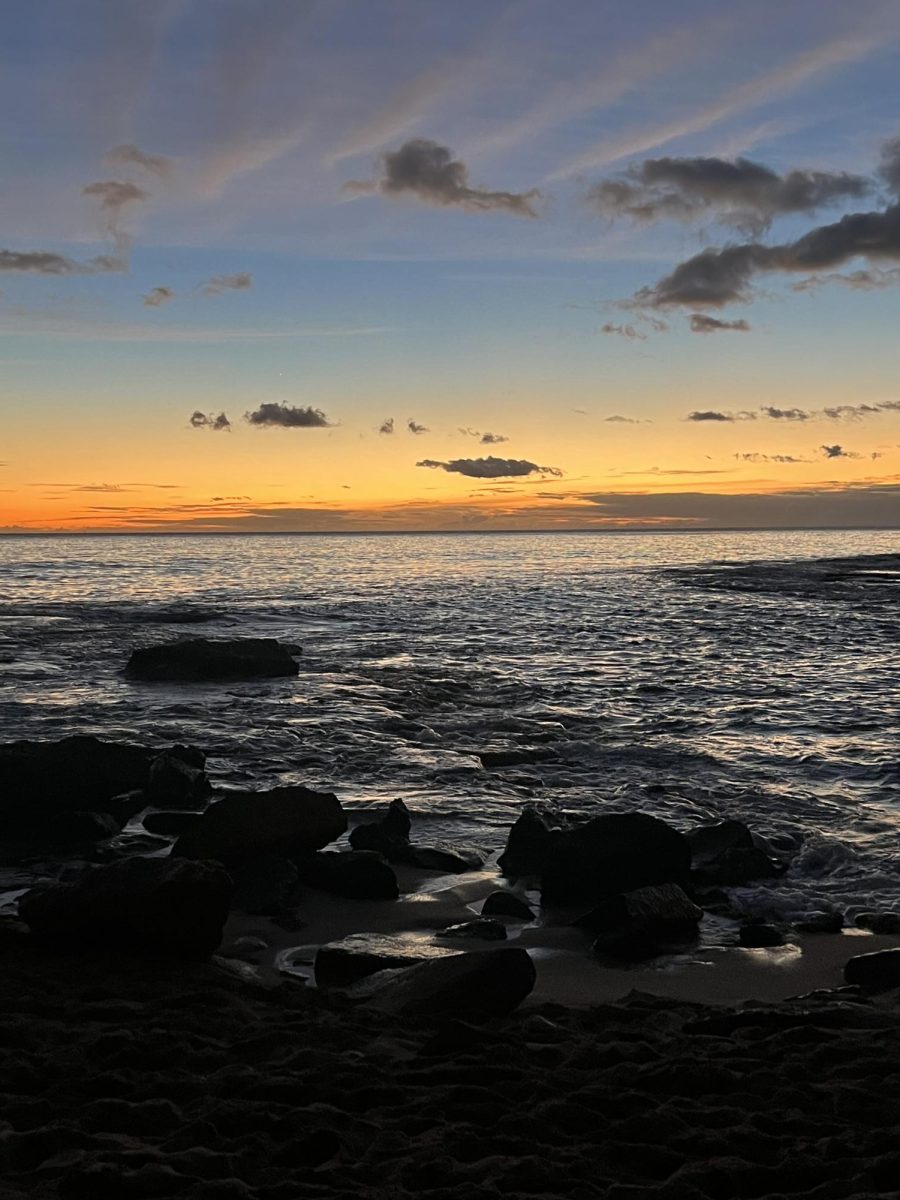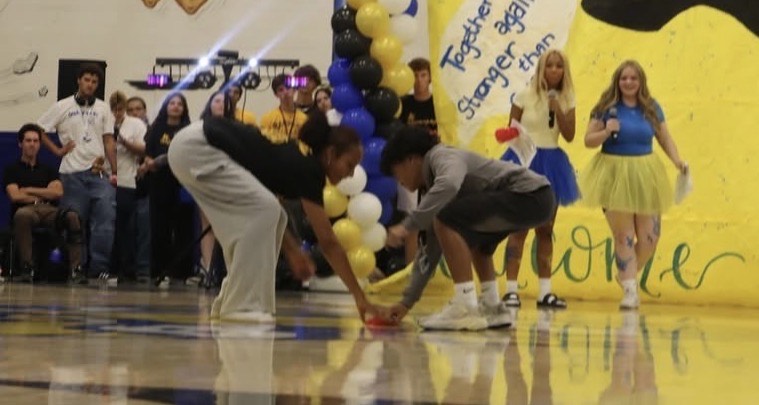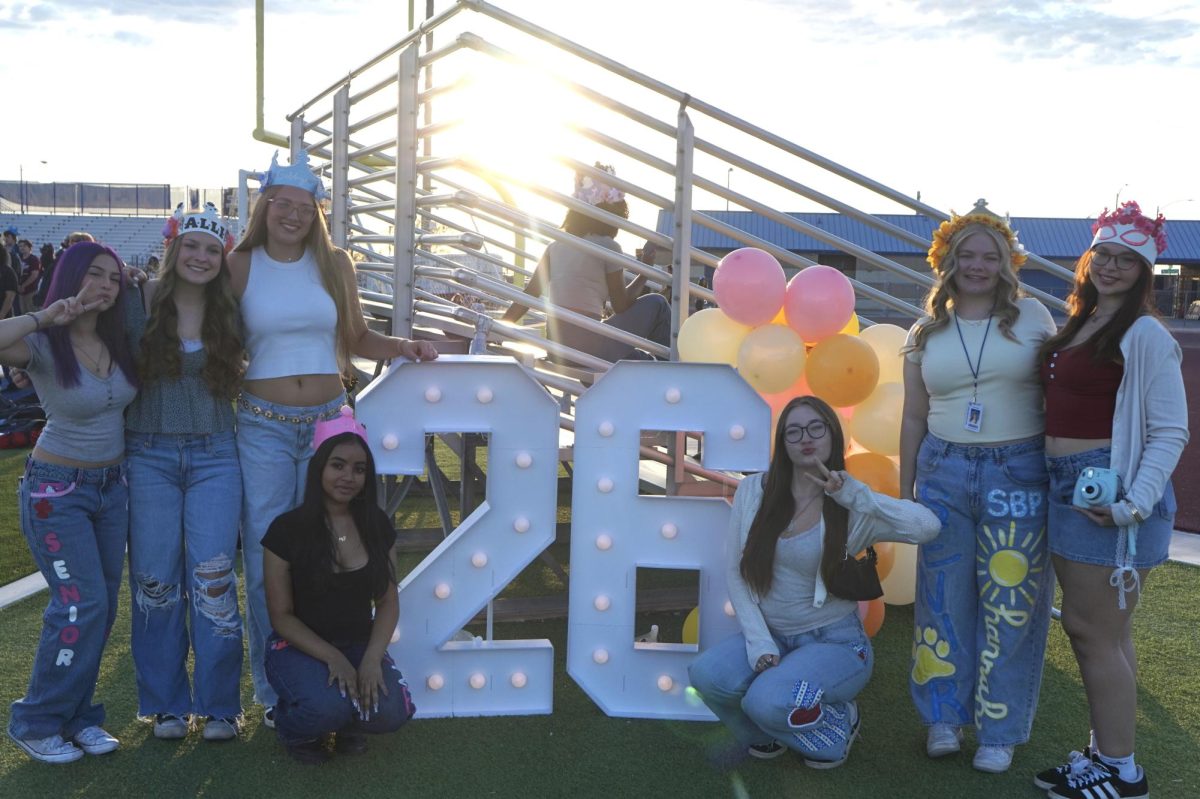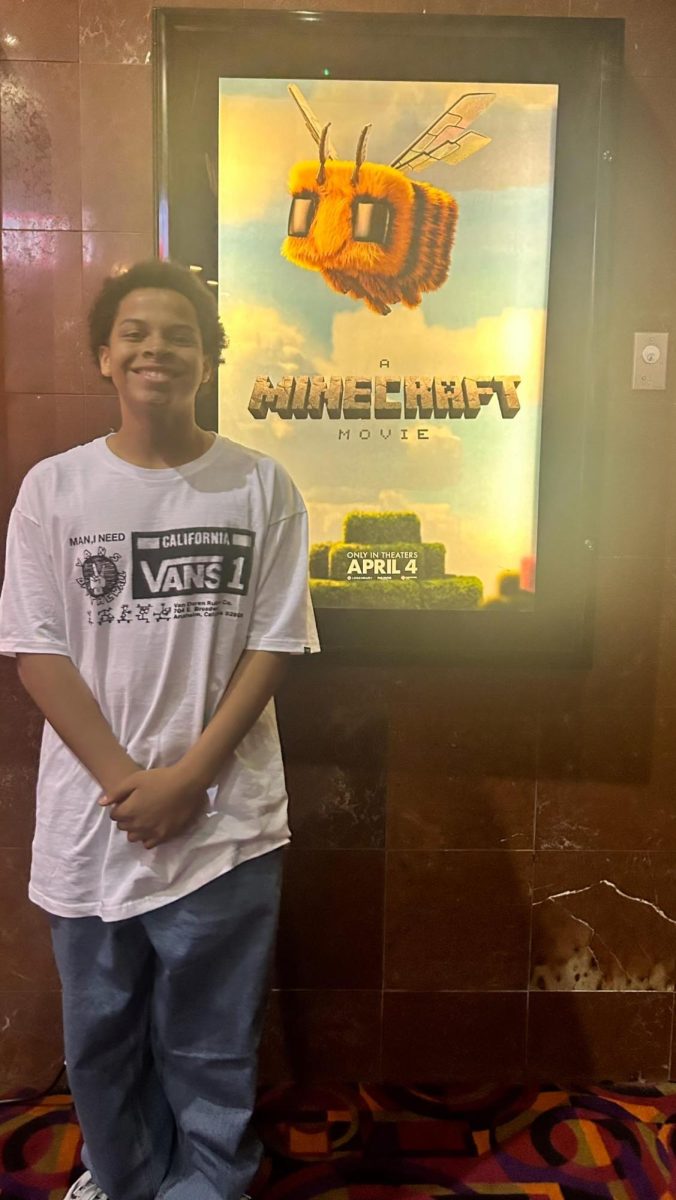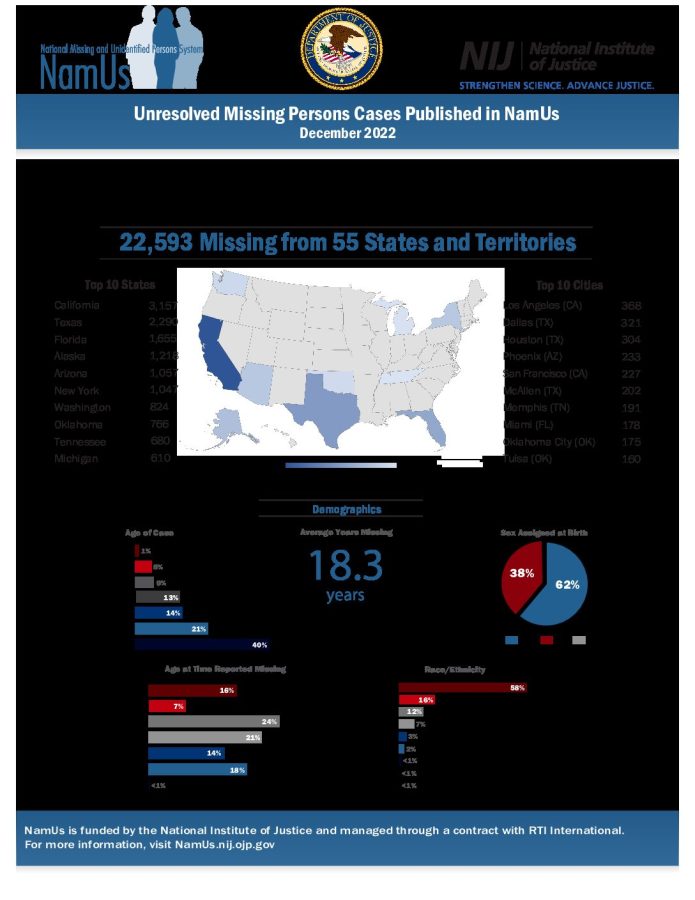Missing Persons Media Bias
Infographics from namus.njj.ojp.gov show statistics of the top ten states persons go missing as well as the top ten cities. The statistics also share the demographics of the cases. Although it is shown majority of missing persons are white, missing persons of color are only 13% of the population, while white persons are 75%. Take note that Namus states, “NamUs; it does not include information on all missing, unidentified, and unclaimed persons nationwide.”
March 3, 2023
The media highlights white missing persons while missing persons of color lack the same attention. Bias in the media continuously appears as thousands of people continue to go missing every year.
The most recent statistics from the 2021 NCIC MISSING PERSON AND UNIDENTIFIED PERSON STATISTICS reported 521,705 missing persons in 2021. Of those missing persons, 59% were white (including Hispanics), and 38% were minorities (3% were unknown). Nearly 40% of missing persons are people of color, yet they only make up 13% of the US population. The US reports thousands of missing person cases every year, so not every case will get widespread media coverage; however, the range of coverage of white and minority victims is still far from proportionate.
The unbalanced media coverage occurs because of three main reasons; runaways, criminals, and desensitization. Many minority children receive classifications as runaways and therefore do not receive Amber Alerts. Missing minority adults are erroneously associated with drugs, gangs, and criminal involvement. Many also believe missing minorities’ impoverished living conditions make crime a regular part of their lives.
The unequal attention in the media led two sister-inlaws, Natalie and Derrica Wilson to fight for a solution. The two women worked together to create the Black and Missing Foundation, Inc (BAMFI), a non-profit organization created to bring attention to missing persons of color and provide resources to the families and friends of those persons. In July of 2022, the My Favorite Murder podcast with Karen Kilgariff and Georgia Hardstark featured Natalie and Derrica Wilson and their journey.
Natalie Wilson discusses how their inspiration for the Black and Missing Foundation came from the case of Tamika Houston, who went missing from Derrica’s hometown in South Carolina. The sister-inlaws discovered that Tamika was not receiving any media attention compared to white missing persons, even though officials contacted the same people to help find Tamika and the white missing persons. Natalie Wilson’s career in media relations and public relations, and Derrica Wilson’s career in law enforcement aided the women in spreading awareness of the issue. Natalie Wilson states, “…that’s what we are trying to do, change the narrative, that these are not thugs, they’re not criminals, they are valuable members of our community.”
Natalie and Derrica Wilson mention they are starting to get some traction as they have national media partners and are frequently asked, “How can we work together?”, “How can we do a better job covering these cases?” Although they are aware they still have a lot of work to do, Derrica Wilson states law enforcement now looks at them as allies, to be a resource for them, understanding there is a lack of resources in the missing person department.
The HBO series, Black and Missing, created by the two women, won the best new documentary series at the Independent Spirit Awards in 2022. The series provides the public with a glimpse of what families of missing black persons face, the issues they go through, and what got them there in the first place.
BAMFI helped solve over 400 black and missing cases, and Natalie Wilson mentions, “We didn’t get into this for the accolades I mean we are very passionate about our work” continuing to say, “Missing persons isn’t a black issue, it’s not a white issue, it is an American issue, it’s a human issue, and it takes all of us, so we all play a part.”



